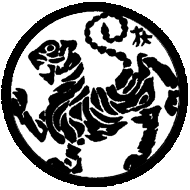WHAT HAPPENS IN CLASS:
As with any physical activity, our Shotokan Karate classes begin with warmups. Warmups are a vital part of class, as they prepare your muscles for activity, and also help to improve body control and flexibility. The warmup period is also a time when the student shifts their mindset from the outside world, to focus on the karate training which is taking place within the dojo.
Once warmups are over, class consists of one or more of the following:
- Kihon (basics and combinations)
- Kata (forms)
- Kumite (sparring)
- Bunkai (application/partner drills)
SPECIAL TRAINING (TESTING AND TOURNAMENTS):
Testing and tournaments are an opportunity to measure your karate progress, and to train in a different (and more stressful) environment. Both offer feedback from outside sources such as judges and examiners, and require the student to overcome performance nerves and learn to find focus in many different situations.While neither tournament nor testing are required for our students, both are strongly encouraged, and several opportunities for both exist each year.

KIHON:
Kihon (basics) is the process of learning how to make a technique properly, and then practicing that technique until it can be done quickly, correctly and efficiently every time. Once the fundamental techniques are learned, kihon moves on to more complicated combinations that include multiple techniques and shifting.Kihon also involves teaching the various karate stances that are used. Kihon is never perfected; there is always something that can be modified or improved.
Kihon is the foundation of everything else that takes place in the dojo. It also develops the physical body, gaining in strength and flexibility.
KATA:
Kata are a choreographed series of karate moves. Kata combines basics techniques (kihon) with shifting in different directions. This helps train the body to execute karate while changing speed or direction, as if the student was being attacked by a number of opponents, from different directions. It helps to develop an understanding of how karate would be applied in a variety of real-world situations.
Bunkai is a particular type of kata practice that uses a partner to practice those real-world applications.
Traditional Shotokan Karate has 26 katas.

KUMITE:
Kumite training, also called sparring, is the application of your karate techniques against an opponenet. Kumite is a critical aspect of training, helping students to develop confidence in their skills as they learn to control the speed, power, timing and distance of their techniques.
Kumite takes a variety of forms. In the beginning stages, students are taught 5- or 3-step sparring, carefully controlled contact which helps students become accustomed to attacking and defending in a safe context. As the student gains experience and skill, they move on through 1-step, semi-free, and ultimately free sparring.

